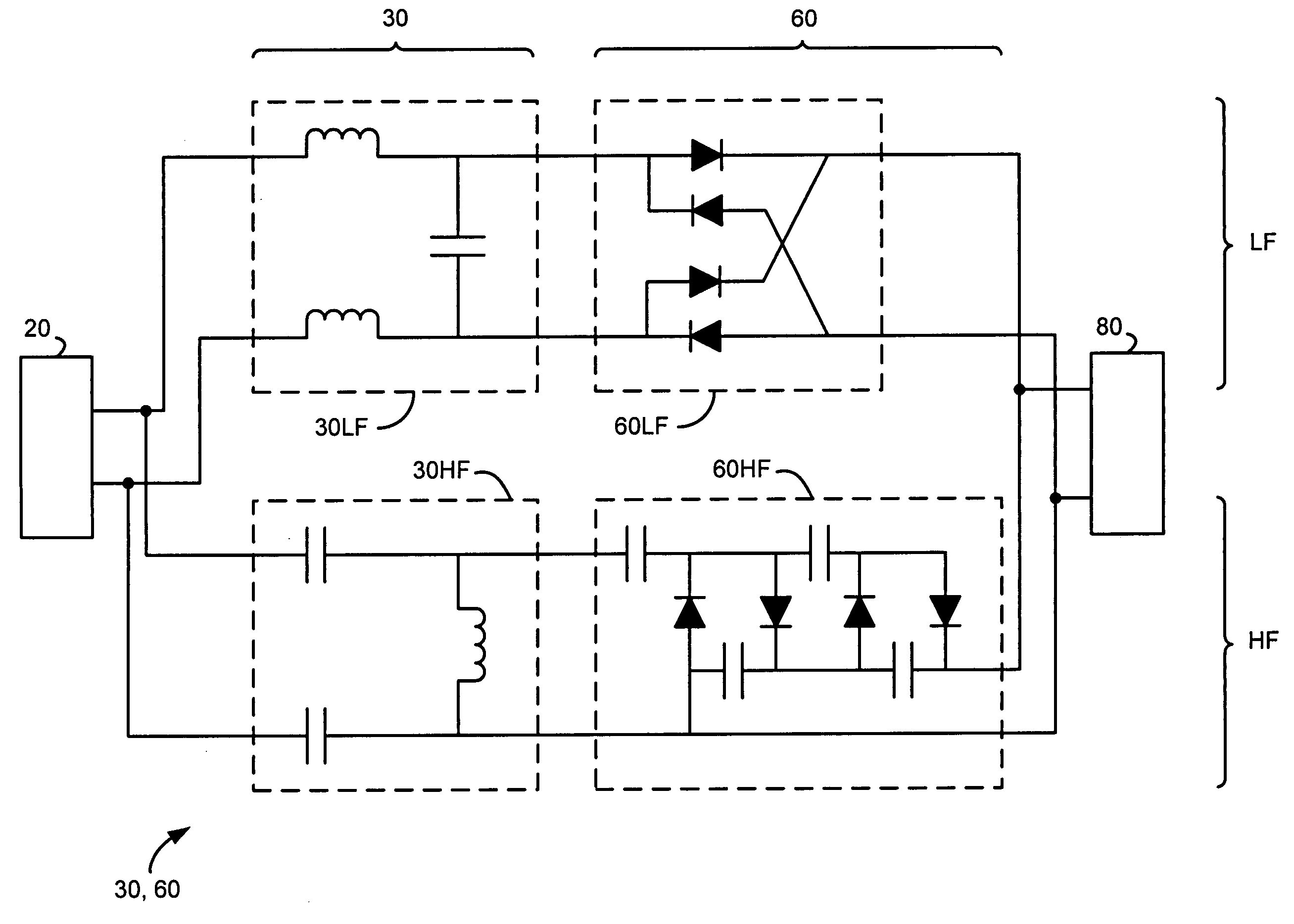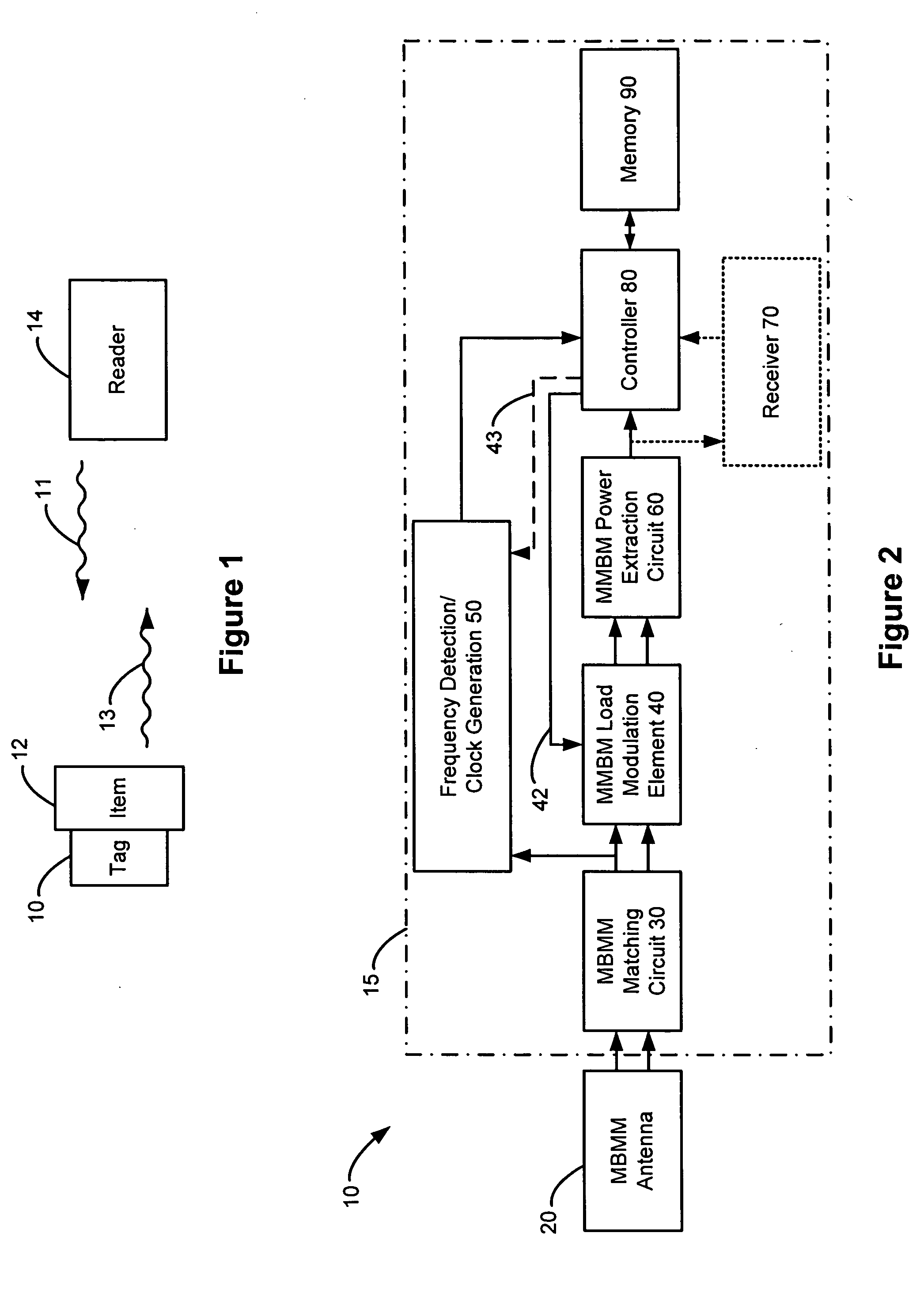Method and apparatus for multiple frequency RFID tag architecture
a radio frequency identification and tag technology, applied in the field of multiple frequency radio frequency identification tag architecture, can solve the problems of not only the associated cost of tags and readers, but also the logistics of system operation, and impede the industry acceptance of multi-frequency applications, and achieve the effect of preferably lower conductivity of electrostatic antennas
- Summary
- Abstract
- Description
- Claims
- Application Information
AI Technical Summary
Benefits of technology
Problems solved by technology
Method used
Image
Examples
Embodiment Construction
[0020]FIG. 1 shows the basic context of a RFID system in which the disclosed RFID tag 10 can be used. In the system, one or more RFID readers 14 seek to identify one or more tags 10 that have been associated with (e.g., affixed to) an item, a palette of items, etc., by irradiating the tag(s) 10. As disclosed herein, the radiation 11 from the reader 14, also known as the reader's carrier or interrogation signal, can constitute one or more frequencies (e.g., 125 kHz, 13.56 MHz, 915 MHz, and 2.45 GHz), which provides substantial benefit for both long and short range detection of the tag 10 as discussed above. Although one reader 14 is shown, it should be understood that different readers 14 can be used to broadcast different frequencies, and that multiple readers 14 can be placed in an array in a real RFID tag location application to locate tag(s) 10 over a wide area. Readers 14 can be hand-held and portable, or fixed in set locations.
[0021] The tag 10 is responsive to the various fre...
PUM
 Login to View More
Login to View More Abstract
Description
Claims
Application Information
 Login to View More
Login to View More - R&D
- Intellectual Property
- Life Sciences
- Materials
- Tech Scout
- Unparalleled Data Quality
- Higher Quality Content
- 60% Fewer Hallucinations
Browse by: Latest US Patents, China's latest patents, Technical Efficacy Thesaurus, Application Domain, Technology Topic, Popular Technical Reports.
© 2025 PatSnap. All rights reserved.Legal|Privacy policy|Modern Slavery Act Transparency Statement|Sitemap|About US| Contact US: help@patsnap.com



